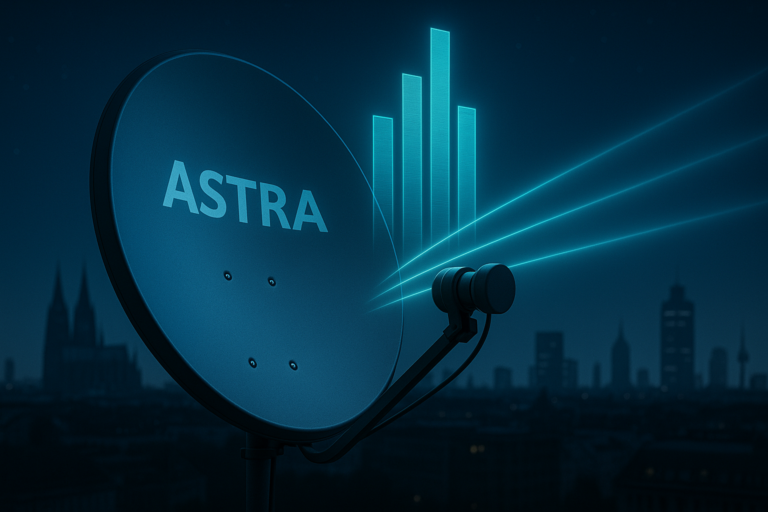How to Load ICAM OSCam on MEO Receivers [Step-by-Step Guide for 2025]
Getting encrypted satellite channels up and running on your MEO receiver isn’t as hard as it seems, especially with ICAM OSCam. If you’re tired of struggling to unlock channels or finding unclear instructions online, you’re in the right spot. Setting up ICAM OSCam is key to watching subscription-based content, and this step-by-step guide takes the guesswork out of the process.
You’ll walk through everything you need, from choosing software versions to installing, configuring, and activating channels. Whether you’re updating your setup or starting fresh, this guide helps you do it with confidence and less stress.
What You Need Before Loading ICAM OSCam MEO
Before you can reap the rewards of satellite viewing with ICAM OSCam on your MEO receiver, a bit of prep work makes everything run smoother. Let’s cover exactly what hardware, software, files, and housekeeping need attention so you don’t hit a wall halfway through your setup.
Supported Receivers and Images
 Photo by Tranmautritam
Photo by Tranmautritam
ICAM OSCam doesn’t work with every set-top box. Make sure you have one of the most common receivers that play nice with OSCam and Enigma2 setups. Here’s a quick list:
- Vu+ Series: Zero 4K, Uno 4K, Duo 4K, Ultimo 4K
- Zgemma: H7, H9S, H11S, and other popular models
- Dreambox: DM900, DM920, DM520, DM525, DM820, DM7080
- Mutant/AX: HD51/52, Mutant HD models
- Octagon: SF8008, SF4008, and other 4K boxes
- Edision: OS mini 4K, OS mio 4K
- Xtrend: ET11000, ET12000
The right firmware image is just as important. The most trusted and popular images that people use for reliable ICAM OSCam setups include:
- OpenATV (6.4 and above recommended)
- VTI (popular with Vu+)
- OpenPLi
- OpenVIX
- Merlin, DreamOSat, Gemini GP3/GP4, OoZooN (mainly Dreambox)
A quick heads-up on CPU architecture:
Receivers mainly use MIPS or ARM CPUs. The OSCam binary you choose must match your receiver’s architecture. If you load the wrong one (like ARM image on a MIPS box), nothing will work. Double-check this before you download anything.
Files and Credentials Needed
Getting OSCam up and running isn’t just about installing an app; you’ll need several files and a few essential details ready to go.
- ICAM OSCam Binary: Get the OSCam version built for your box’s architecture (ARM or MIPS, not interchangeable).
Find trusted sources or use community forums for the latest stable or V9+ builds. - Configuration Files:
oscam.confoscam.serveroscam.user- Optionally, channel and keys files (for certain decryption setups)
- Keys: These can include BISS or other CSA keys for channel decryption, especially on private or rare feeds.
- Subscription or Server Credentials:
- Cline/Server Info: Supplied by your card-sharing provider or your own local card setup. These details go into your
oscam.serverfile. - Username and password for OSCam web interface (pick your own for better security).
- Cline/Server Info: Supplied by your card-sharing provider or your own local card setup. These details go into your
Where to get these files:
- Direct from your provider or the support forum they recommend.
- For configs and binaries, reliable Enigma2 forums, receiver-specific community pages, or official OSCam builds are your main sources.
- Never use random internet downloads—stick to proven community sites and official listings to avoid malware.
Backing Up and Preparing Your System
Doing a proper backup before you start is like wearing a helmet before riding a bike. It protects your work if things go sideways.
Here’s how to back up and prep:
- Back Up Configuration Files
- Copy your
/etc/tuxbox/config/oscam/directory (or wherever your config files are kept in your image). - Back up scanned channels and timers using your image’s built-in backup tool, often found in the settings or device manager menu.
- Store a copy on your PC or a USB stick.
- Copy your
- Check Network Access
- Make sure your receiver is connected via Ethernet (wired is best for reliability).
- Note your box’s IP address—you’ll need this to upload files or access the OSCam web interface.
- If you use WiFi, check for stable signal and speeds.
- Verify Storage Space
- Free up at least 100MB on your receiver storage for backups, installs, and logs.
- Match the OSCam Binary
- Confirm if your box is ARM or MIPS architecture.
- Download only the OSCam binary for your exact type.
- Set Permissions After Upload
- After transferring files with FTP, set the OSCam binary to executable (
chmod 755). - Keep config files at
644permissions.
- After transferring files with FTP, set the OSCam binary to executable (
- Change Default Passwords
- Immediately change the default OSCam web interface password.
- If your image comes pre-set with a password (like
icam2022), update it for better security.
Regular backup helps you stay safe before each upgrade or file swap. If you run into errors, restoring from a backup lets you start again without a full reset.
Set these basics before you load ICAM OSCam and you’ll thank yourself later when the process works on the first try.
Installing ICAM OSCam on Your Receiver
Setting up ICAM OSCam on your MEO receiver can feel technical, but once you know the two most common install methods—auto-installation script and manual install—it gets much simpler. Each option works for different skill levels: beginners often pick the script, while advanced users may go manual for more control or tricky box setups. Below, you’ll learn both paths step-by-step, plus common mistakes and fixes so you don’t get stuck mid-way.
Using the Auto-Installation Script
 Photo by Mikhail Nilov
Photo by Mikhail Nilov
The auto-install script is by far the quickest way to get OSCam ICAM running on your Enigma2 receiver. This method is great if you prefer things automated or don’t want to mess with files one by one.
How it works:
- Download the Script
- Grab your receiver’s IP address (via TV menu).
- Open an SSH tool on your PC (PuTTY or Terminal).
- Connect as user
root(default password is often blank or set by your image). - Paste the install script line (usually starts with
wget -O - https://... | bash). - Example:
wget -O - https://cccamlines.eu/icam_script | bash - Script will auto-fetch the latest compatible ICAM OSCam and install everything needed.
- Select Your Image Type
- Most scripts ask what firmware image you’re using (OpenATV, VTi, OpenPLI, etc).
- Pick your image with the keyboard. This helps the script adjust directories and files to fit your setup.
- Reboot When Prompted
- The script may finish by telling you to reboot or auto-restarting your box. Always let it fully finish and reboot as suggested so all files load correctly.
- Automatic Bouquet Upload
- Most scripts can download and replace your channel/bouquet lists with versions suited for ICAM (Sky DE, etc).
- If prompted, say yes to set up the new ICAM-compatible bouquets, making sure decrypted channels show up in your channel list. You can always reload custom bouquets later.
- Enter Server Credentials
- Either mid-script or once installed, go to the OSCam web interface (usually
http://[box_ip]:8888orhttp://[box_ip]:83). - Log in and fill your server line in the
oscam.serverfile (protocol, user, pass, port…). - Triple-check your info for typos or spaces, as a small mistake will mean channels don’t clear.
- Either mid-script or once installed, go to the OSCam web interface (usually
Best for:
- Beginners
- Anyone wanting a safe, fast install
- If you’re updating OSCam versions
Manual Installation and Setup
Manual install is best if you want to control every step or need to replace/update binaries yourself. Use this if your receiver has compatibility issues, you want the very latest dev build, or if an auto-script isn’t available for your image.
Step-by-step manual install:
- Download the Right Binary
- Go to a trusted community (like official OSCam builds).
- Find the binary for your receiver’s CPU (ARM or MIPS). Double-check this!
- Download to your computer.
- Transfer the Binary to Your Receiver
- Use FTP or SCP to copy the OSCam file (often named just
oscam) to/usr/bin/on your receiver. - WinSCP or FileZilla work great for Windows users.
- Use FTP or SCP to copy the OSCam file (often named just
- Set Executable Permissions
- Log in by SSH.
- Run
chmod 755 /usr/bin/oscamto make sure the file can run.
- Handle Library Links
- Newer OSCam sometimes needs extra libraries—for example,
libcrypto.so. - If you see an error about missing libraries, make a symbolic link:
ln -s /usr/lib/libcrypto.so.1.1 /usr/lib/libcrypto.so
- The exact filenames can differ depending on your receiver and image. Check what’s already there or look up your image’s requirements.
- Newer OSCam sometimes needs extra libraries—for example,
- Put Config Files in Place
- Config files like
oscam.conf,oscam.server, andoscam.usershould go into/etc/tuxbox/config/(for most images). - If your OSCam looks elsewhere, use the web UI to check or ask in community forums.
- Config files like
- Restart Softcam or Reboot
- Go into your receiver’s menu and restart the Softcam.
- Or just reboot the box to load the new version.
Manual install is best for:
- Advanced users
- Anyone troubleshooting non-standard setups
- Those needing the latest experimental OSCam features
Common Installation Hiccups and Fixes
Even with the best guide, stuff happens! Here’s a run-down of the usual problems and ways to fix them so you spend less time scratching your head.
Frequent installation issues:
- OSCam won’t show up in the Softcam menu
- Wrong location for the binary or missing permissions.
- Solution: Make sure
oscamis in/usr/bin/, and dochmod 755 /usr/bin/oscam.
- Library errors (missing
libcrypto.so)- Wrong or missing dynamic library link.
- Solution: Create the correct symlink based on your box and image (
ln -s …as described above).
- OSCam won’t start at boot
- Script isn’t set in the right init folder or named incorrectly.
- Solution: Check for the startup script in
/etc/init.d/or your image’s specific softcam start folder. Rename it to match the style (likeS99oscam).
- Config files not loading
- Put configs in the directory your image expects.
- Solution: For most images, that’s
/etc/tuxbox/config/, but check your receiver’s details.
- No channels decrypting
- Typos in the server config, expired subscription, or wrong CAID in config.
- Fix: Double-check server credentials, restart OSCam, and review the web interface log for “not found” or “no entitlements” errors.
Tips for troubleshooting:
- Always check the OSCam web interface logs if things don’t work. They often point right to what’s missing or misconfigured.
- A quick
chmod 755on the OSCam binary andchmod 644on config files solves many startup issues. - Update your channel/bouquet list for ICAM using a trusted source—the wrong list will look like a “decryption failed” error.
If you hit a wall, try restoring your last working backup, then repeat the step that went wrong. Most errors are just a skipped line or typo—take your time, and you’ll have ICAM OSCam clearing channels reliably.
Configuring OSCam for ICAM and MEO
Getting OSCam to work with ICAM channels on your MEO receiver calls for careful setup of its key configuration files and credentials. Once the software is installed, the real magic happens inside the config files. These files handle everything from stream relay (for ICAM decryption) to entering subscriptions and keys from your provider. You’ll find the setup process gets much easier when you understand where things go and why each section matters. Let’s walk through setting up the most important configs, adding your server details, and making sure everything runs smoothly.
Setting Up Configuration Files
Almost all Enigma2 images keep OSCam configuration files under /etc/tuxbox/config/oscam/ or sometimes just /etc/tuxbox/config/. If you’ve installed via an auto-script, check both locations as the script chooses the right folder for your device.
The three main OSCam files you’ll be editing:
- oscam.conf (global settings, streamrelay, protocols)
- oscam.server (reader and server connection lines)
- oscam.user (user profiles and access controls)
To enable ICAM (for Sky DE or similar packages) you need the right mix of new parameters, especially for streamrelay and your card reader. Here’s what matters:
In oscam.conf:
- Add or make sure you have a
[streamrelay]section:stream_ecm_delay = 0stream_relay_ctab = 098D(for Sky DE, change this to match your provider’s CAID)
- Make sure Radegast protocol is enabled (needed for some boxes and plugin combos):
[radegast]port = 9090allowed = 127.0.0.1,192.168.0.0-192.168.255.255user = icampassword = [choose_password]
- Set
httpport(like 8888) andhttpallowed(your local subnet, such as192.168.0.0-192.168.255.255).
In oscam.server:
- Insert your ICAM subscription or server line under the
[reader]section:- Set
protocol = newcamd device = server_ip,port- Use the provider’s given user and password for
userandpassword - Set
caid = 098Dor whatever matches your subscription - If your provider supplies
nuidandcwpk, add:nuid = XXXXXXXXXXXXXXXXcwpk = XXXXXXXXXXXXXXXX
- Example snippet:
ident = 098D:000000group = 1emmcache = 1,3,2,0
- Set
- Make sure your
keyssettings and paths (if using SoftCam.key) point to:/usr/keys/SoftCam.Keyor/etc/tuxbox/config/SoftCam.Key(depends on your image)- Set
readnano = allfor maximum ECM support if needed
In oscam.user:
- Add or check your line for ICAM user access:
[user]user = icampwd = [set_a_password]group = 1au = 1(or assign AU to your main reader group)keepalive = 1
Checklist of what to double-check:
- Is CAID set right in every place for your channels? (For Sky DE, always 098D.)
- Do paths to key files exist on your box? (
ls /usr/keys/SoftCam.Keyto check.) - Are all permissions set? (Config files at 644, binaries at 755.)
This is a lot of text, but after the first setup, it gets routine. Save backups before making tweaks so you can roll back with ease.
Adding and Updating Server Credentials
All the magic of decryption happens only if you use the right login lines from your ICAM subscription supplier. Most providers give you a server line (C-line for CCCam, N-line for Newcamd) plus one or two keys.
How and where to enter them:
- Copy your server line (starts with N: or C: depending on protocol) directly into
oscam.serverunder a new[reader]section. - Paste or carefully enter each value—make sure there are no extra spaces.
- If your supplier includes a
cwpk(Control Word Packet Key) ornuid(unique number for the subscription), paste these as well after youruserandpassword. - If there’s a
DES keyor other extra, include it in the recommended field. - Save the file and reload or restart OSCam.
Tips for provider info:
- Always use the exact protocol, host, port, username, and password your supplier gives you.
- Get any required NUID or CWP keys from your supplier—these are needed for ICAM-enabled ECMs.
- Double-check CAID and ident, as the wrong entry stops decryption.
- For multi-server setups, you can add several
[reader]sections—just set theirgroupdifferently if you want to organize them.
Where to get CWP/NUID if you’re unsure:
Most suppliers note this in your order email or a dedicated customer dashboard page. If missing, ask their support—it’s a must-have for ICAM.
Final Activation and Testing
With configs and subscription info in place, it’s time to boot up OSCam and see if your channels clear.
How to start OSCam and check status:
- Start OSCam:
- Via your receiver’s menu:
- Menu > Softcam Panel > Select OSCam > Start or Restart.
- Or in terminal:
- SSH in, then run:
/usr/bin/oscam -b(or wherever your binary lives)
- SSH in, then run:
- If you’ve installed an auto-script, this might already be running. Just verify.
- Via your receiver’s menu:
- Find the OSCam web interface:
- Open your browser, go to
http://[receiver IP]:8888(or your set port). - Login with the user/password from your
oscam.conf.
- Open your browser, go to
- Check live log and status:
- Watch the log as you zap to an encrypted (ICAM) channel.
- Look for messages like “found (newcamd)” or “decoded within X ms”. This shows decryption is working.
- If there are “no entitlements” errors or “not found”, double-check your server details and config.
- Restart services for stubborn issues:
- If channels stay black, restart the Softcam again.
- You can also reboot the receiver to flush any stuck memory or plugins.
- Make sure your bouquet/channel list matches the channel’s CAID and format.
- Check decrypted channels:
- Switch to an ICAM channel you know should work.
- Wait 3–5 seconds. If all is correct, the channel shows video and audio, with ECM/EMM updates in the web UI log.
- If the screen stays black, scan the log for “config” or “EMM” errors. Fix one thing at a time and repeat.
What if one channel works but another doesn’t?
- Often, this is a bouquet or channel list issue, not a config error.
- Reload your channel list or check for missing keys for that channel.
With these steps, you should see green lights in OSCam’s web interface, confirming you have everything up and running for ICAM-powered viewing on MEO. If you don’t see decryption, re-read your config and correct any typos—the smallest mistake can keep content locked.
Save your working configs—doing so now means you won’t have to redo hours of setup the next time you upgrade or switch boxes.
Conclusion
Loading ICAM OSCam on a MEO receiver works best when you take your time and follow each step in order. The prep with backups, double-checking file versions, and careful editing of configs makes the difference between a quick setup and hours chasing small mistakes. If a channel stays black or something fails, don’t panic; logs and backups are your best friends here.
Keep your OSCam software up to date for better compatibility and security fixes as community updates roll out. Saving your working configs after successful setup means headaches are less likely next time you upgrade or switch hardware. With some patience, and by not rushing each screen or config, you can get your MEO box working smoothly. If you run into snags, remember most issues are common and fixable—it just takes a bit of persistence and the right info to sort them out.
Thanks for reading and giving your setup the attention it deserves. If you found this useful or have your own tips to share, let others know in the comments or pass this guide to a friend.





